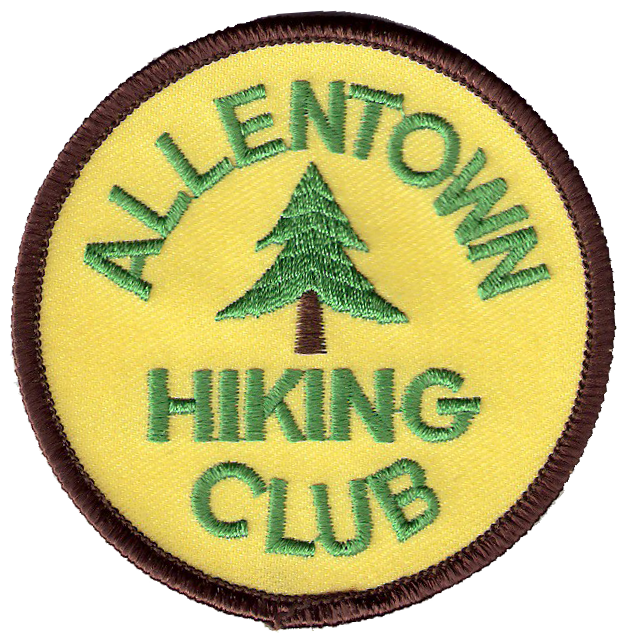An Allentown Hiking Club Histor
by Barbara L. Wiemann
The Allentown Hiking Club's fourth decade was a period of steady growth, characterized with high participation in hikes and social activities.
AHC Organizational Developments
Membership, which had held steady at about 50-60 members for some time, doubled during the decade, standing at 129 members in December 1970. Despite no dues increases (dues were $1.00 per year), club finances also improved. In March 1963, AHC had $91.00 in its treasury; in December 1970 treasurer Merritt Zimmerman could report a balance of $307.23.
Longer morning hikes and afternoon shorter hikes were well attended. Leaders often had 20 or more hikers. The Happy Hiker reported one example of AHC hiker dedication. On November 10, 1968, hikers awoke to a premature snowstorm that deposited up to a foot of snow on the Appalachian Trail. Despite this, six hardy hikers completed the hike to the shelter, enjoying the fall foliage covered with snow.
Frequent joint day hikes with other hiking clubs and weekend hiking events, including multi-club events, were scheduled year round. An especially popular destination was the Mokoma Inn in LaPorte, Sullivan County.
Social activities and slide nights drew 40-60 people to the West End Youth Center on Greenleaf Street. In 1968, the club entered the Allentown Halloween Parade with a float and 22 marchers dressed as hikers; they took home a $35.00 prize.
The Happy Hiker, the club newsletter begun by Helen Haldeman, was filled with club and trail news, trip reports, member news, and anecdotes to keep everyone well informed.
Appalachian Trail
During this decade, the club agreed to expand its Appalachian Trail responsibilities, adding the five-mile Bake Oven Rd. to Rt. 309 section to the five miles from Rt. 309 to Tri County Corner that the club had maintained since 1931. (The Blue Mountain Eagle Climbing Club retained responsibility for the New Tripoli Shelter.)
AHC members also took their Appalachian Trail Conference duties seriously. The club designated representatives to each ATC meetings (Delaware Water Gap in 1961, Vermont in 1964, North Carolina in 1967, and Shippensburg in 1970).
In 1967, AHC and its members wrote letters to legislators in support of House Bill 4865, designed to protect the Appalachian Trail from development. This trail wide effort culminated with the passage of the National Trails Act in 1968.
Likewise, in 1967 the club supported effort to save Sunfish Pond on the AT near Delaware Water Gap. Club members Dixon Miler and Merritt Zimmerman joined Supreme Court Justice William O. Douglas on his hike to Sunfish Pond to publicize the campaign, which was ultimately successful in 1970.
On January 26, 1970, the club held a special meeting, attended by 60 members, at the Old Court House on Hamilton St. The attraction was guest speaker Col Lester Holmes of ATC, who showed a film and spoke about the AT and conservation.
Keystone Trails Association
Members were also enthusiastic attendees at every KTA meeting. In 1967, club member Merritt Zimmerman was elected KTA Vice President, a position he held for nine years.
To earn the Hiking Awards that KTA offered, Zimmerman began a series of hikes to cover the Appalachian Trail in the state. Five members completed this series; the club followed this with a series of hikes covering the AT in New Jersey. To recognize his effort in organizing these hikes, Zimmerman was presented with a watch.
In 1969, KTA announced plans for the new 400-mile long Tuscarora Big Blue Trail. In the fall, Zimmerman led club members on a weekend trip to help clear and mark the new trail in the vicinity of Col. Denning State Park. The club assumed responsibility for another section in 1970 and spent two weekends clearing a second section of the new trail.
As the club completed its fourth decade in 1970, Edward Garvey was completing an Appalachian Trail thru hike. His book Appalachian Hiker, would spark an explosion of interest in the AT, hiking and backpacking, and have a profound effect on the Allentown Hiking Club in its fifth decade.
 MENU
MENU
